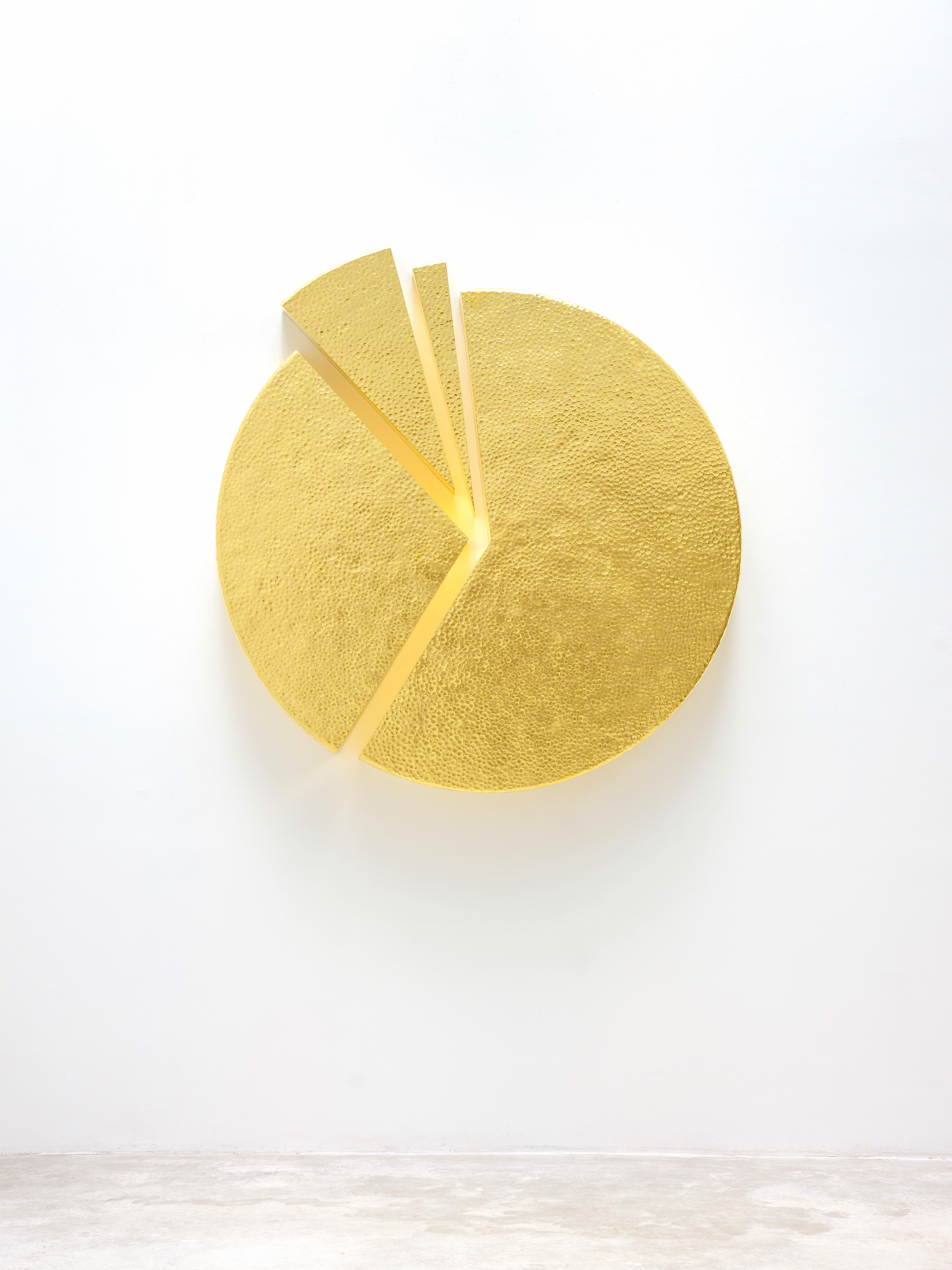I dream I work I dream work
Stefan Nikolaev
March 5th - June 17th, 2020
Michel Rein, Brussels
Installation views

About
Michel Rein gallery is pleased to be holding Stefan Nikolaev’s 8th solo show after Rien ne va plus (Paris, 2018); Bronze, sweat and tears (Brussels, 2016); If things are not as you wish, wish them as they are (Paris, 2013); New Works old dreams (Paris, 2009); Sickkiss (Paris, 2006); One for the money, two for the show (Paris, 2003); Under reconstruction (Paris, 2002).
The innocent eye sees nothing
« We constantly drift between the object and its demystification, powerless to render its wholeness. For if we penetrate the object, we liberate it, but we destroy it; and if we acknowledge its full weight, we respect it, but we restore it to a state which is still mystified. » - Roland Barthes Mythologies, 1957.
The subject of this text is a number of artistic works collected in an exhibition with a certain title and concept, for whose presentation can be used a certain and tested art-history approach - a short iconological analysis of the works, accompanied by a commentary on the cultural context and the artist’s overall work. For this exhibition, this method, here rather convenient given the nature of the works (sculptural), turns out to be quite slippery in a sense. On the one hand, the symbolic load of the works does not originate so much from the intention of the author as from the viewer’s eyes. Proof of this are the ironically-catchy titles that deviate more than they lead somewhere. And on the other hand, because the artist, more than ever in his exhibition, uses cultural mythologies to see where his experiments with the properties of sculpture can lead him to. Do these mythologies break down in their materialization or become tools for grasping modernity?
For the roaming around them, Stefan Nikolaev chooses an interesting Virgilian companion. Only an artist is, according to poet Charles Baudelaire, able to decipher the meaning of the analogies that allow the transition from the world of perceptions to that of ideas. The beginning of Baudelaire’s poem Correspondances, quoted by Nikolaev, is like Dante’s warning to the ones crossing the gallery’s entrance. In the space of symbols created by the artist, they are as observant as they are observed, with a particularly «familiar and close look». The instantly recognizable outlines of an upside-down horseshoe, the masks forever frozen into extreme expressions of happiness and sadness, the romantic sunset with flying birds in the sky are present in everyday life, in various material forms often brought to absurd kitsch. But beyond this undeniable and overflowing physical presence, they function as signs testifying to something else, immaterial and stretching over time, which makes them «myths» of a kind, regardless of their manifestations or rather because of them. It‘s namely this that re-surfaces also in Stefan Nikolaev’s searches and connects the remains of history, legends, advertising strategies and mass consumption.
The gold, neon, steel or bronze in which Stefan Nikolaev encodes the images, besides fragility and efficacy also implies a strange warning, just as unusual use of neon and copper, the artist makes in God save the hobby horse (2019). The warning has become a kind of invitation to stop and enter. Instead of offering a specific answer “where”, the title of the work returns to the artist’s way of exploring the images and their shaping. « All pictures owe more to other pictures than they do to nature », writes Ernst Gombrich in his essay Meditations on a Hobby Horse or the roots of the artistic form (1963).
The meaning of the images may also be in their ability to gather each other, conceal and reveal at the same time, similar to masks in the ancient Greek theater, which allowed the actors to go on stage several times, i.e. to perform several different roles. In Ricchi e poveri (2018) wealth and poverty, happiness and misfortune are the two faces of the same coin, constantly thrown by the one who holds it. With their casting into cast iron, Stefan Nikolaev gives back to the masks their full weight, especially figurative, while gold is the necessary contrast to reflect the light. And it comes, romantic and infinite, from the hurriedly made but quite sufficient strokes of Be yourself no matter what they say (2019). The imagination oversaturated with images needs nothing more to get comfortable in front of the screen of its own existence. The positive and probably present in every motivational book title of the work becomes the one of the exhibition, with the typical for Stefan Nikolaev ironic look at clichés. The so-called individualism nowadays is often built on them. The most romantic of all objects placed on the line is the geometric Dreamworks, a journal of dreams, insomnia, visions, fantasies, and nightmares. The chart presents a certain proportion of the time spent in such experiences, but as personal as it is, it’s shared with everyone for his own emotional and life balance. The existence, which as the sunset comes and goes away continuously, is also that of the images, constantly changing, until in the end nothing remains of them too.
Dessislava Mileva

